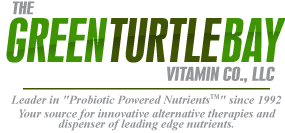Ginkgo Biloba
The results of numerous in-vitro and in-vivo studies have shown Ginkgo biloba extract to have a varied pharmacology and interesting potential in the management of a range of conditions (note Ginkgo biloba is an ingredient in PowerMate, Sunnie and Diabetiks):
Circulatory system
Ginkgo biloba extract is held to have a number of vaso-protective actions including a relaxing effect on blood vessels, a contractile action resulting in an increase of tone in abnormally relaxed vessels, a protective action against capillary permeability, antithrombotic activity as well as anti-ischemic and anti-edemic properties.
Cognition and memory
Ginkgo biloba extract is believed to support both cognitive and memory function. Studies suggest a range of pharmacological actions including enhancement of neurotransmitter release, the inhibition of biogenic amine uptake and a protection of endothelial derived factor (EDRF) central mechanisms. Bilobalide contained in Ginkgo biloba extract may also reduce ATP loss thus supporting cognition, memory and over brain energy levels.
Platelet activating factor (PAF)
PAF is an inflammation mediator involved in various pathophysiological conditions affecting heart, lung, brain and vessels due to its potent chemotactic activity on neutrophils inducing superoxide release, aggregation and degranulation. Ginkgolide B has been found to be the most active PAF antagonist compound contained in Ginkgo biloba extract (28,29,30) and is thought to be effective in improving the blood rheology and microcirculation, inhibiting super oxide generation and in modulating the effect of PAF on vascular bed (28,31,32,33).
Activity on ageing and age-related disorders
Ginkgo biloba extract is believed to have a protective effect that may guard against some of the effect of the ageing process. Animal studies indicate that Ginkgo biloba extract may protect cerebellar neurones against oxidative stress induced by hydrogen peroxide. Pre-treatment of neurones with Ginkgo biloba was reported to reduce cell death rate during the exposure to oxidative stress and to defend against cell apoptosis and DNA fragmentation induced by hydroxyl radicals (42,43). Peroxidation of LDL is one of the mechanisms involved in the deposition of cholesterol in the arterial wall and the consequent formation of the atherosclerotic plaque. Ginkgo biloba is thought to protect LDL against oxidative stress caused by superoxide, peroxyl and hydroxyl radicals (44).
It was also observed that the extract may be able to improve the mitochondria respiration in gerbils with cerebral ischaemia and the age-related learning deficits in rats and mice (46), moreover it was also reported to improve the short-term memory in aged mice and to reduce the age-related changes in membrane fluidity (47).
Anti-ischemic and cardio-protective activities. Studies report that Ginkgo biloba has an activity on the cardiovascular system particularly at the level of the arteries, veins, capillaries and cellular elements of the blood. On an isolated rat heart Ginkgo biloba demonstrated an antiarrhythmic effect on post-ischaemic arrhythmia and a protective action against cardiac ischaemia-reperfusion oxidative injury by inhibition of oxygen free radicals production during reperfusion and preventing the leakage and oxidation of ascorbate – a myocardial endogenous antioxidant (36,37).
The German Monograph – the clinically proven standard for Ginkgo biloba
The extracts referred to in clinical trials on Ginkgo biloba are manufactured using a multi-step process specifically designed to concentrate the active principles from the Ginkgo biloba leaves. Limits (both upper and lower) are defined in the German Monograph.
Ginkgo biloba extract should contain approximately 24% flavonglycosides (primarily composed of quercetin, kaempferol, and isorhamnetin) and 6% terpene lactones (min 2.8 – max 3.4% ginkgolides A, B, and C, and min 2.6- max 3.2% bilobalide). Other constituents include proanthocyanadins, glucose, rhamnose, organic acids (hydroxykinurenic, kynurenic, protocatechic, vanillic, shikimic), D-glucaric acid and ginkgolic acid (max 5 ppm), and related alkylphenols .
Antioxidant and free radical scavenger
Free radical scavenger
The free radical scavenging activity of Ginkgo biloba is most likely due to the flavonoid constituents of the extract. Ginkgo biloba protects endothelial cells against the negative effects of oxygen produced by the hypoxanthine/xanthine oxidase system by inhibiting the lipid peroxidation and by preventing the decrease of intracellular glutathione. The extract is thought to have a behaviour similar to a superoxide dismutase, scavenging superoxide anion (18).
Ginkgo biloba is also thought to be able to inhibit the oxygen radical production by human polymorphonuclear neutrophils activated by bacterial chemotactic peptide or by type I collagen (19).
Antioxidant
The antioxidant activity of Ginkgo biloba has also been demonstrated on the membrane micro-rheological changes and on lipoperoxidation induced by exposure of human erythrocytes to hydrogen peroxide (20,21). Many other studies also demonstrate the antioxidant activity and the scavenger effect on free radicals possessed by Ginkgo biloba extract (22-27).
Ginkgo biloba
Ginkgo Biloba is extracted from the leaves of the Ginkgo Biloba tree dating from the Palaeozoic era (350 million years ago). The Ginkgo Biloba tree, which is notable for high resistance to both pollutants and pests, has a long tradition of use in Oriental medicine; in particular for the treatment and control of respiratory and circulatory ailments and for brain function.
The name Ginkgo is derived from a wrong transcription of the Japanese name Yin-Kwo that means silver fruit, while the name biloba derives from the bilobed shape of its leaf (1).
Cosmetic applications
Cosmoceutical applications include anti-ageing, elimination of toxins, free radical scavenger, powerful antioxidant, strengthening of the skins defences, improvement of dermal micro-circulation and stimulation of lymph drainage. Among the range of products currently marketed are face creams, anti-ageing creams, anti-wrinkle creams, shampoo, anti-cellulite preparations and toothpaste.
As some rare occurrences of skin sensitivity to the terpene lactones of Ginkgo biloba have been observed
(note Ginkgo biloba is an ingredient in PowerMate, Sunnie and Diabetiks)




